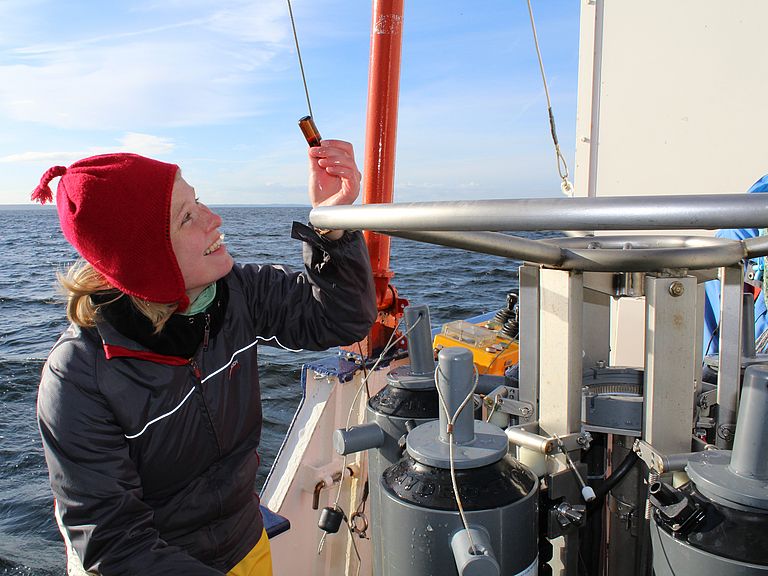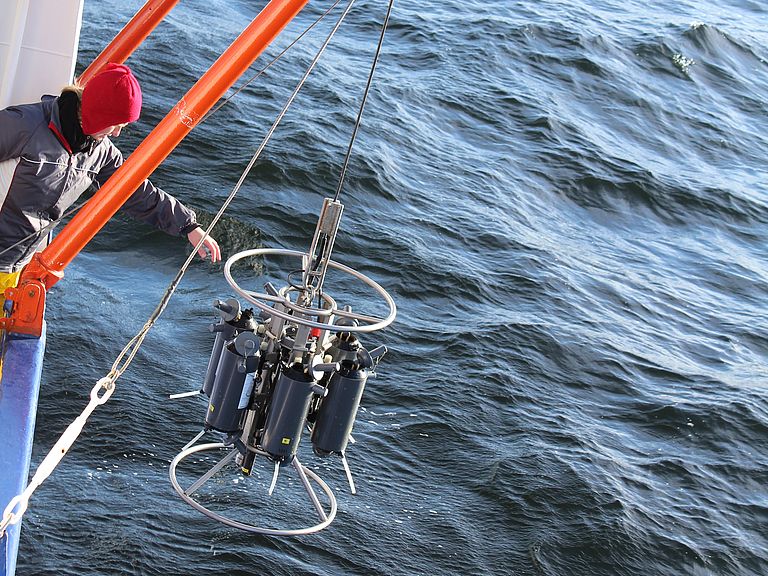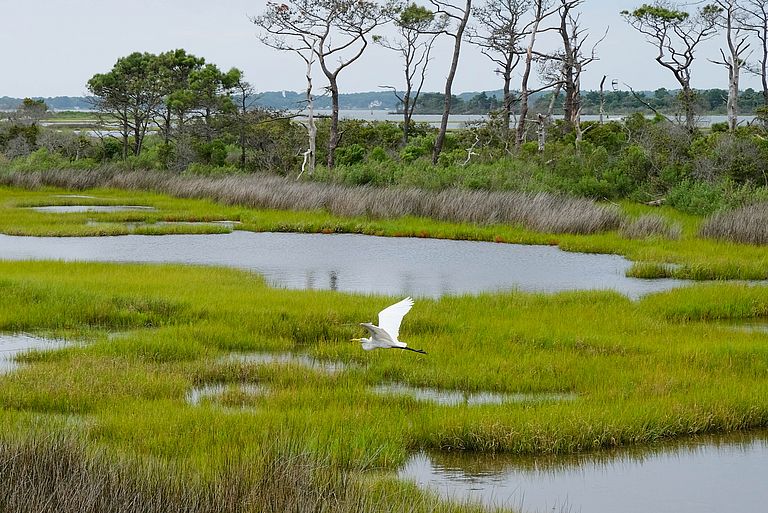Coasts as climate protectors
A new study involving three German research centers shows: coastal wetlands and estuaries are collectively a net greenhouse gas sink
- Joint press release of Helmholtz-Zentrum Hereon, Leibniz-Center for Tropical Marine Research (ZMT) and GEOMAR Helmholtz-Centre for Ocean Research Kiel -
The anthropogenic emission of greenhouse gases is causing global warming. But from tropical lagoons to polar fjords, from mangrove forests in the intertidal zone to seagrass meadows, coastal ecosystems are diverse and can function as either greenhouse gas sinks or sources. However, the impact of these systems on the global greenhouse balance is only poorly quantified to date. Therefore, the researchers compiled a dataset based on studies at 738 sites, published over a period from 1975 to 2020. Specific characteristics such as climate and hydrology, as well as the presence of plants, determine whether a coastal region absorbs or emits greenhouse gases.
"Understanding how and where greenhouse gases are released and absorbed in coastal ecosystems is an important first step in implementing effective climate change mitigation strategies," said first author and study leader Dr Judith Rosentreter, senior research fellow at Southern Cross University in Australia. Protecting and restoring mangrove and salt marsh habitats, for example, is a promising strategy to increase the uptake of CO2 by these coastal wetlands, she said. Other measures to mitigate human influence on emissions, such as reducing inputs of nutrients, organics, and wastewater to coastal waters, could further improve the greenhouse gas balance.
Southeast Asia's coasts lead the way in climate protection
The researchers found that the strongest greenhouse gas sink is found in Southeast Asia. This is due to the extensive and productive tropical coastal wetlands with their diversity of plant life. A second sink hotspot is North America, with its large coastal wetlands, as well as CO2-absorbing fjords. "Our research shows that globally, fjords absorb around 40 percent of the CO2 that would otherwise be released from tidal systems, deltas and lagoons. The majority, 86 percent, of this important CO2 uptake by fjords comes from the North American region, primarily Greenland," says Dr Bryce Van Dam of the Institute for Carbon Cycles at Helmholtz-Zentrum Hereon. "Small islands have long coasts, which is why they can have an oversized effect on coastal greenhouse gas balances," adds Nils Moosdorf, hydrogeologist at the Leibniz Centre for Tropical Marine Research (ZMT) and Professor of Hydrogeology in Coastal Areas at Kiel University.
Europe and Russia's coasts release greenhouse gases
However, some areas were found to be weak sources of greenhouse gases, for example European and Russian coasts. This is because we find less CO2-absorbing tropical coastal wetlands in this colder climate, but both regions still have many estuaries that release greenhouse gases. "We show, when we account for all three greenhouse gases, that coastal areas in eight of the ten world regions are net greenhouse gas sinks," Rosentreter says.
"The study nicely shows that other greenhouse gases besides CO2 have to be taken into account to get a realistic estimate of the climate-relevant radiative balance," adds Prof Hermann Bange, marine biogeochemist at GEOMAR and co-author of the study.
Background:
For this study, the international team of scientists evaluated measurements from coastal regions from every continent except the polar regions. "This study is part of the RECCAP2 project, which was is only possible with such a large and diverse collaboration," says Hereon coastal researcher Bryce Van Dam. RECCAP2 (Regional Carbon Cycle Assessment and Processes, Phase 2) is coordinated by the Global Carbon Project and collects and compiles regional greenhouse gas data for 14 major regions of the world.
Difference in world regions:
The strongest greenhouse gas sinks on the coasts
- First: the archipelagic region of Southeast Asia absorbs large amounts of CO2 because of its extensive and productive tropical mangrove forests and seagrasses
- Second: North America, because of its large areas of salt marshes, mangroves, and seagrasses but also CO2-absorbing fjords.
- Third: Africa, with significant CO2 uptake by mangroves and seagrasses, which are only moderately reduced by greenhouse gas emissions from estuaries.
Moderate coastal greenhouse gas sinks
- South America: moderate CO2 uptake from coastal wetlands, especially mangroves, and some greenhouse gas emissions from estuaries.
- Australia and New Zealand: long stretches of coastal wetlands that absorb CO2, which are compensated by a large number of estuaries along its coasts, many of which are a source of greenhouse gases.
- Western Asia: weak source of greenhouse gases from estuaries and moderate CO2 uptake from coastal wetlands, mainly seagrasses.
Weak coastal greenhouse gas sinks
- East Asia and South Asia: the moderate CO2 sink in coastal wetlands is largely offset by greenhouse gas emissions from estuaries. Weak greenhouse gas sources on the coasts
- Europe and Russia: Both regions release greenhouse gases at their coasts. These regions have many tidal estuaries that release greenhouse gases; a colder climate also means they have fewer coastal wetlands that could absorb large amounts of CO2.
Original publication:
Rosentreter, J.A., Laruelle, G.G., Bange, H.W. et al. (2023): Coastal vegetation and estuaries are collectively a greenhouse gas sink. Nature Climate Change, doi: 10.1038/s41558-023-01682-9.

Examination of a water sample during an excursion with the research cutter LITTORINA at the time series station Boknis Eck in the Baltic Sea. Photo: Hermann Bange, GEOMAR

Water sample colelction with the rosette water sampler during an expedition with the research cutter LITTORINA at the time series station Boknis Eck in the Baltic Sea. Photo: Hermann Bange, GEOMAR

Salt marsh on Assateague Island in the United States. Photo: Sara Cottle via Unsplash


